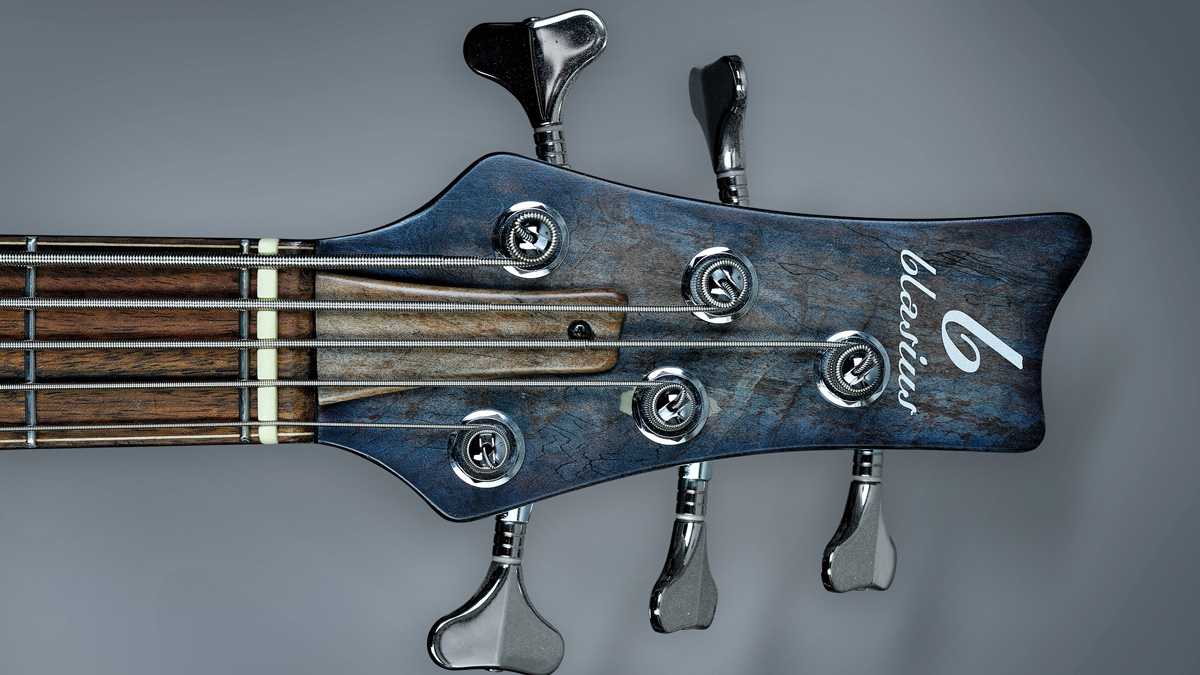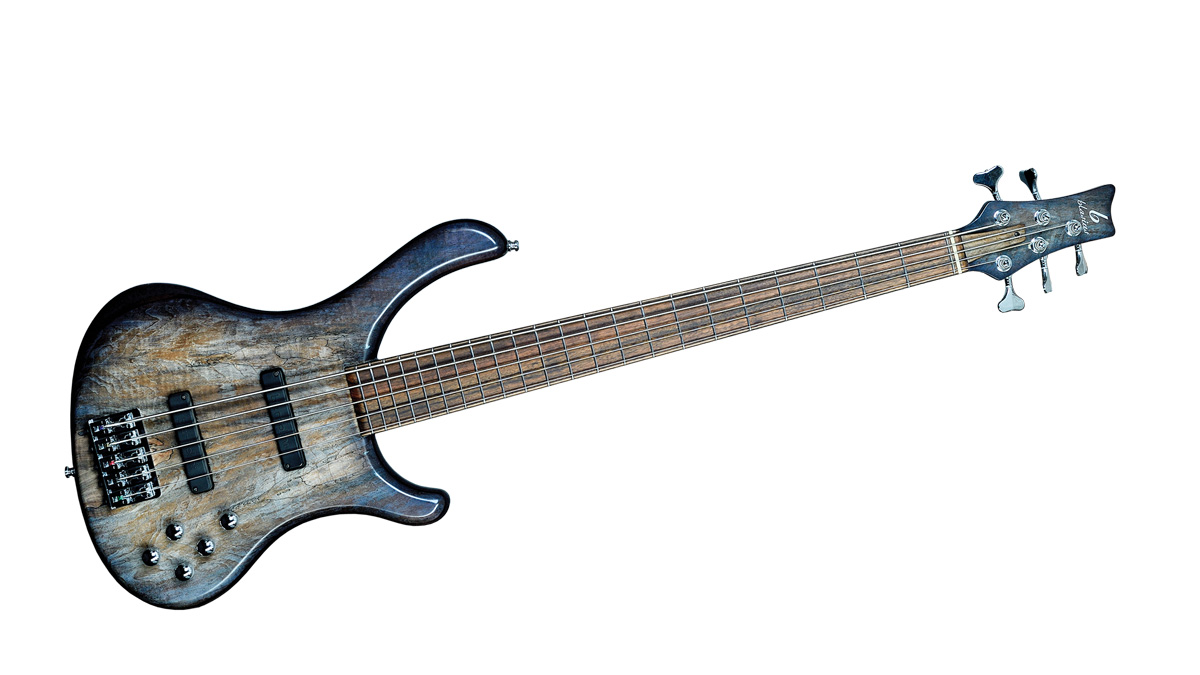MusicRadar Verdict
A fabulous bass and a real surprise from the Blasius stable.
Pros
- +
A great all-round package with everything you could want from a great five-string.
Cons
- -
Pricey but worthwhile.
MusicRadar's got your back
We love uncovering great instruments from new luthiers; you often find something of a hidden gem.
Travelling to our doormat all the way from Hungary, this Bali five-string from Blasius Guitars is a fine bass that ticks most of the boxes on first inspection.
Although at first glance you may think it’s just another smart-looking bass with Bartolini pickups, what you can’t see under the pleasant bodywork are the electronics. And until you plug it in, who knows what’s in store? Allow us to fill you in.
Build
To the untrained eye, the Bali looks quite standard in its appearance. Extensive cutaways offer unhindered access to the upper regions of the 22-fret ovangkol fingerboard, while front and rear contouring make the bass sit perfectly against the player’s body.
The four-piece laminated body, coupled with a seven-piece laminated through- neck (with carbon graphite reinforcement rods), means that the timbers will inevitably contribute to the tones available as well as offering some eye candy.
The spalted figured maple top is coloured with a blue/green/aqua dye, which has also been used on the neck, and both are coated in a satin acrylic finish. The impressive colour scheme has also been applied to the matching headstock, while the lack of front-facing position markers maintains a clean look to this bass, although side markers are present along the top edge.
Chrome hardware has been used throughout with Schaller M4 machine heads and a 2000-5 bridge unit, while knurled chrome controls for volume, pickup pan, bass, middle and treble are all securely attached and operate smoothly.
A pair of Bartolini 74X45J pickups have been matched with a Zolkow X3 preamp; removing the control cavity plate shows that the circuit has trimpots for the output of each pickup, with a boost of 10dB available. Dip switches within the preamp also allow the frequencies for each control to be selected as per the player’s requirements, with a boost or cut of 12dB at 40, 80, 220, 400, 600 and 900Hz and 1.8 kHz, and boost or cut of 14dB at 4, 5, 10 and 20 kHz. The control cavity itself is very well shielded with copper, but it is rather busy, with a lot of cabling and a loose floating battery. That said, the general level of finishing is exemplary.
Sounds
Despite some headstock bias, the bass balances well and isn’t particularly over-burdened by the multiple timbers used in its construction.
Thankfully, the slim D-shaped neck profile makes for a very enjoyable playing experience; the thin neck and slim nut width lend themselves very nicely to an extremely comfortable five-string bass, while the consistent fingerboard width across the whole neck makes this an easy instrument to navigate. The setup is immaculate, with no sharp fret ends anywhere along the neck and a silky-smooth string action.
From the off, this is a vibrant, organic-sounding instrument; when playing the bass, you can actually feel the resonance of the body along with a strong sustain that projects the notes you play. Plug in and the woody nature of the Bali stands out a mile; despite a great electronics package, the natural sound is highly impressive in its own right.

With the EQ set flat, the best description we can offer is that tonally, the Bali breathes very nicely, with a modern jazz tone as a starting point. How you then choose to tailor the sounds on offer is very much up to you.
With a touch of mid boost, the low B string sounds focused and growly, presenting a strong tone that is in no way woolly, instead being articulate and defined. All along the fingerboard, the note delivery is crisp but with plenty of body to the notes, and an even response from every string.
Obviously, changing things up using the internal options of the preamp opens the tonal scope even wider; you can compensate for your playing style and output if you prefer to use one pickup more regularly than another. Should you wish to tailor the EQ’s effectiveness in a given frequency range, experimenting with the dip switches will give you increased flexibility.
We were highly impressed by the Bali from the moment we took it from the supplied Mono gigbag. Everything about it is simple and effective with a minimum of fuss; even the extensive tonal options are easily accessible and modifications can be made with ease. If you don’t like a change that you’ve made, just return it to its last setting - simple.
Effortless playability and a broad tonal palette come at a cost, of course, and this bass isn’t cheap at just under £2500. We can easily see where the cost is going, however, and anyone wishing to take the plunge may just find they’ve bought the bass of their dreams.
“Tonight is for Clem and it’s for friendship. An amazing man and a friend of the lads”: Sex Pistols dedicate Sydney show to Clem Burke
"Yes, its small proportions mean it’s somewhat restricted tonally, but forget what it can’t do and concentrate on the areas where it excels.": Gibson L-00 Special review
“A well spec’d device that bridges the gap between a basic stereo field recorder and a more advanced multitrack device”: Zoom H4 Essential review










